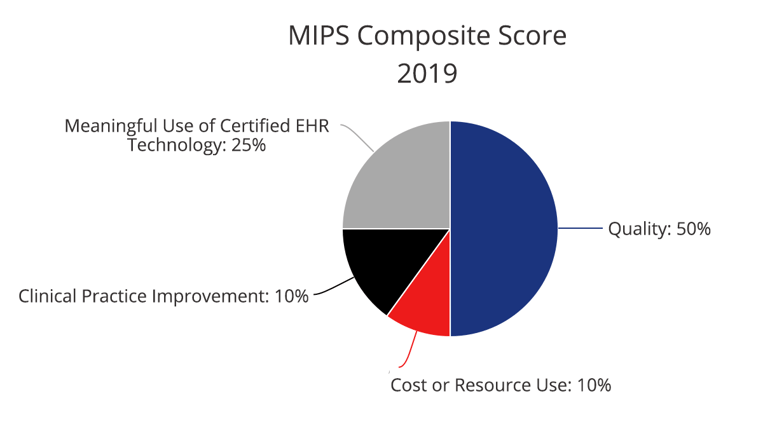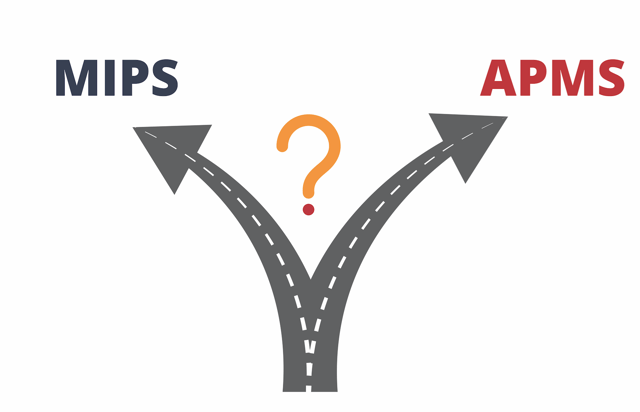 Posted by Dr. Becker on Oct 5, 2016 12:58:55 PM
Posted by Dr. Becker on Oct 5, 2016 12:58:55 PM

Healthcare is staring down the barrel of the largest changes to the industry since Medicare was introduced by Lyndon B. Johnson in 1965. The recently proposed Medicare Access and CHIP Reauthorization Act (MACRA) has sweeping implications for the way healthcare providers are paid for their services. The ultimate goal of MACRA is to navigate away from the traditional fee-for-a-service model, to a quality-based reimbursement model.
Although MACRA is sure to be an initial headache for clinicians, medical practices need to understand and prepare for the new legislation or suffer significant financial penalties.
Let’s break it down.
- So, what is MACRA?
- Am I Eligible? If so, what track is right for me?
- How am I reimbursed?
- When do I start implementing MACRA?
- What will MACRA cost me?
- Who will know my score?
- What are the actions I can take to prepare?
So, what is MACRA?
The Medicare Access and CHIP Reauthorization Act (MACRA) is a landmark legislation, introduced in 2015, that alters how Medicare reimburses physicians.
MACRA repeals the flawed Sustainable Growth Rate (SGR) formula for determining Medicare payments for health care services and introduces the quality payment program (QPP).
The quality payment program has two tracks: MIPS and APMs.
MIPS
The Merit-Based Incentive Payment system (MIPS) consolidates portions of three existing programs: the Physician Quality Reporting System (PRQS), the Value-Based Payment Modifier (VM), and the Meaningful Use EHR incentive program.
Under MIPS, clinicians will be scored based on:
- Quality (50%): Clinicians report six measures versus the nine measures currently required under the Physician Quality Reporting System. This category gives clinicians reporting options to choose from to accommodate differences in specialty and practices.
- Cost or Resource Use (10%): This score will be based on Medicare claims, meaning no reporting requirement for clinicians.
- Clinical Practice Improvement (15%): Clinicians would be rewarded for clinical practice improvement activities such as activities focused on care coordination, beneficiary engagement, and patient safety.
- Meaningful use of certified EHR technology (25%): Clinicians report customizable measures that reflect how they use electronic health record (EHR) technology in their day-to-day practice, with a particular emphasis on interoperability and information exchange.

APMs
The second track in the quality payment program is Advanced Alternative Payment Models (APMs). APMs take care transformation a step farther.
According to CMS, APMs “give us new ways to pay healthcare providers for the care they give Medicare beneficiaries.”
APMs are for clinicians who can demonstrate a significant portion of revenue comes from 2-sided risk contracts and utilize certified EHR technology.
Am I Eligible? If so, what track is right for me?

You are exempt from MACRA if you are a clinician or group with less than or equal to $30,000 in Medicare part B charges, fewer than 100 unique Medicare patients per year, or if you are a provider in your first year of billing Medicare.
All others are eligible for either MIPS or APMs.
Who is eligible for MIPS?
- Physicians
- Physicians Assistants
- Nurse practitioners
- Clinical Nurse Specialists
- Certified Registered Nurse Anesthetists
- Groups that include such clinicians
Who is eligible for APMs?
- Comprehensive ESRD Case Model (Large Dialysis Organization arrangement)
- Medicare Shared Savings Program—Track 3
- Comprehensive Primary Care Plus (CPC+)
- Next Generation ACO Model
- Medicare Shared Savings Program—Track 2
- Oncology Care Model Two-Sided Risk Arrangement (available in 2018)
How am I reimbursed?
MIPS
Clinicians’ MIPS scores will be used to determine a positive, negative, or neutral adjustment to their Medicare Part B payments.
Unlike previous CMS programs, like the value modifier, where the majority of groups who fell into an average quality and cost performance threshold yielded no payment adjustments, neutral adjustments are expected to be very rare (0.3% of providers). MIPS only gives the 0 payment adjustment to a very small subset of clinicians who fall exactly at the composite performance score threshold.
In the first year, adjustments are calculated so that negative adjustments can be no more than 4 percent, and positive adjustments are generally up to 4 percent. However, both positive and negative payment adjustments will increase over time.
The maximum adjustments for each year are:
2019: +/- 4%
2020: +/- 5%
2021: +/- 7%
2022 and beyond: +/- 9%
It is important to note that MIPS is budget neutral. Positive and negative adjustments will balance themselves out, so the payout pool equals the penalty pool. Therefore, the positive adjustments will be scaled up or down to achieve budget neutrality, meaning that the maximum positive adjustment could be lower or higher than 4 percent in 2019.
Despite the penalty risks, MIPS offers a substantial upside to providers that perform well. Top performers are subject to bonuses in addition to their positive payment adjustment.

APMs
Physicians who enroll in APMs do not receive a payment adjustment under MIPS. Instead, these clinicians receive a lump-sum Medicare Part B incentive payment.
In 2026, it is expected that APMs will offer some providers higher payments.
When do I start?
It is essential that healthcare providers begin preparing now for these changes.
Make sure that your practice has a MACRA strategy starting January 1st, 2017. Doing nothing starting January 1st is not an option, as data collected in the 2017 calendar year will be reflected in 2019 payment adjustments.
However, CMS has recently updated their MACRA implementation policy to allow for an easier transition period:
Providers that are ready can start collecting performance data on January 1, 2017, while others can begin anytime between January 1 and and October 2, 2017. Regardless of your start date, performance data will need to be submitted to CMS by March 31, 2018.
How does reporting flexibility affect MIPS reimbursements?
- No participation: If you do not send in any performance data from 2017, you will receive an automatic 4 percent negative payment adjustment.
- Submit Something: If you submit a minimum amount of data --i.e. one quality measure or one improvement activity--you will receive a neutral payment adjustment.
- Submission of a Partial Year: If you submit 90 days of data to Medicare you may earn a neutral or small positive payment adjustment.
- Full Participation: If you submit a full year of data, you have the potential to earn a moderate positive payment adjustment.
What will this cost me?
With over 2,000 pages, navigating the intricacies of MACRA will not be easy, and smaller practices are expected to be hit the hardest. 87% of solo practitioners are expected to see a negative adjustment, while only 18% of groups with 100 or more physicians are expected to be penalized.
In the final rule, CMS details increased support for rural and small practices. MACRA will be providing $100 million to fund training and education for Medicare clinicians in individual or small group practices of 15 clinicians or fewer and those working in underserved (rural) areas.
However, administrative and financial burdens are expected to increase across the board.
|
Estimated Cost for an Eligible Clinician to report MIPS Quality Measures |
||
|
Cost |
Burden Hours |
|
|
Registry or QCDR |
$646.51 |
10 |
|
Electronic Health Record |
$723.50 |
11 |
|
Claims* |
$520.32 |
7-17 |
|
* Median Cost |
||
|
Source: Medicare Program; Merit-Based Incentive Payment System (MIPS) and Alternative Payment Model (APM) Incentive under the Physician Fee Schedule, and Criteria for Physician-Focused Payment Models, Proposed Rule |
||
Who will know my score?
MACRA has a greater focus on public reporting and transparency, particularly when it applies to outcomes. CMS will publish MIPS performance scores to be viewed by the public on the Physician Compare website.
Additionally, physicians will be scored and ranked against other clinicians.
 Physician compare website
Physician compare website
What are the actions I can take to prepare?
Great news, you now have a strong foundational knowledge of MACRA and can start taking steps to prepare.
Download our FREE "MACRA Readiness Checklist" to get started.
Topics: Practice Profitability, MACRA
